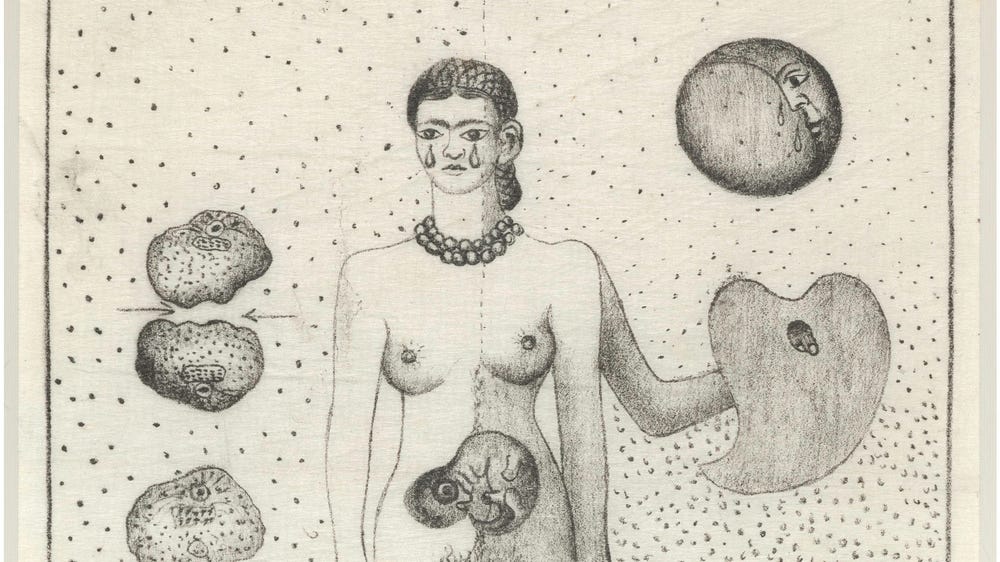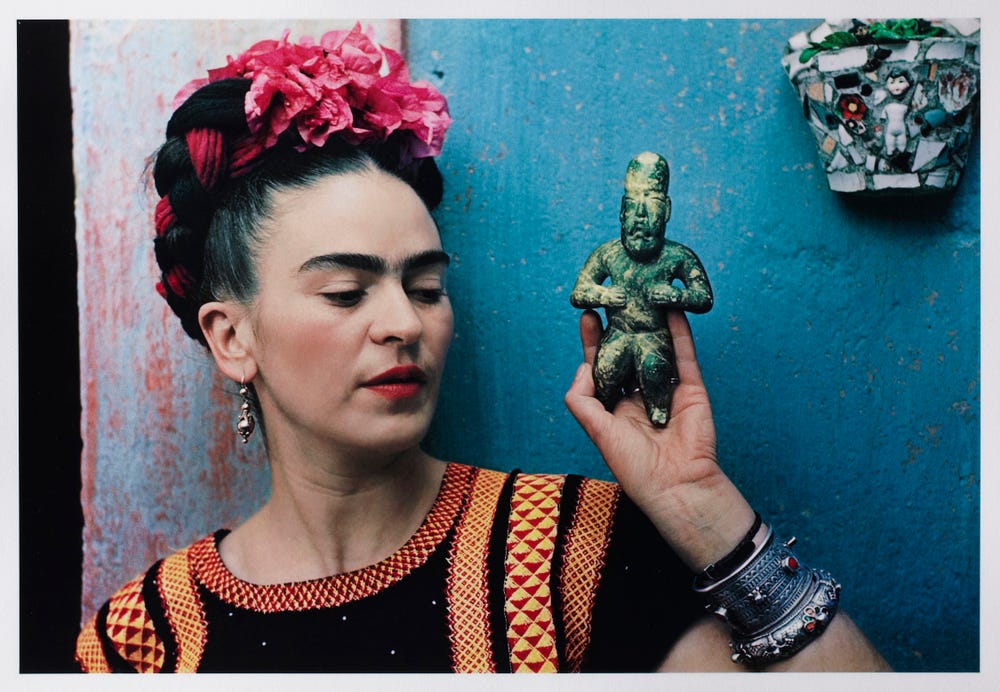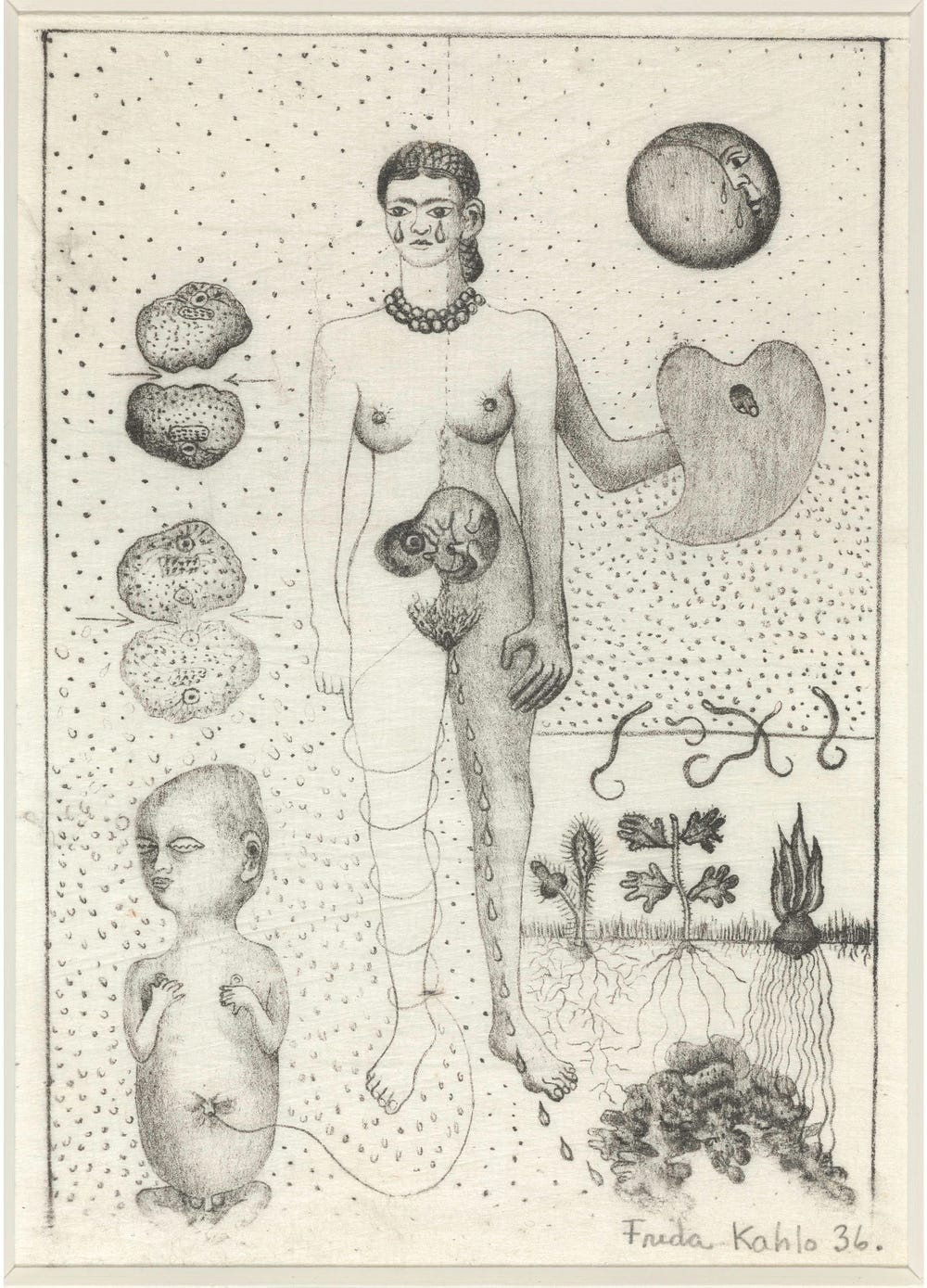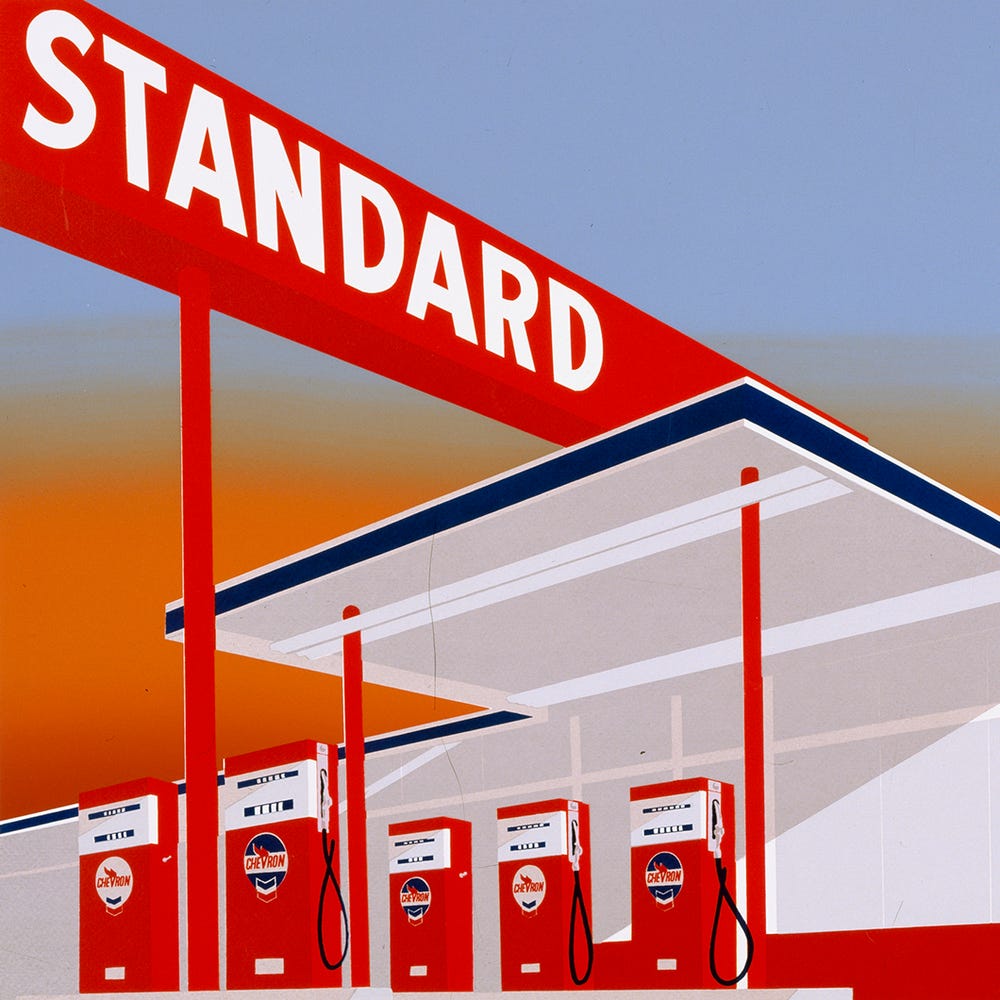Frida Kahlo, El aborto (Frida and the Miscarriage) (detail), 1932, dated later (1936). Lithograph, image: 83/4 x 55/8 in. (22.2 x 14.2 cm). Fine Arts Museums of San Francisco, Museum purchase, Dr. R. Earl Robinson Estate and Achenbach Foundation for Graphic Arts Endowment Fund, 1996.38 © 2020 Banco de México Diego Rivera Frida Kahlo Museums Trust, Mexico, D.F. / Artists Rights Society (ARS), New York. Photograph © Fine Arts Museums of San Francisco, photograph by Randy Dodson
Frida Kahlo (Mexican, 1907 – 1954) was largely a self-taught artist who cultivated the image of herself as an artistic naïf. Never considering a career in art, she was pursuing studies in medical school in 1925 when she experienced a crippling traffic accident that would cause her lifelong pain and medical problems. While she convalesced, she took up painting as a form of therapy and later determined to become an artist. Much of her early work was autobiographical, influenced by her strong sense of her Mexican culture and her love of Indigenous folk art.
Kahlo joined the Mexican Communist Party in the late 1920s and was introduced to a circle of political activists and artists, among them Diego Rivera, whom she married in 1929. She traveled extensively in the United States with Rivera beginning in 1930 as he undertook mural projects in San Francisco and opened his retrospective at the Museum of Modern Art in New York. He was working on a mural project in Detroit when Kahlo experienced a miscarriage following a difficult pregnancy.
Frida Kahlo, El aborto (Frida and the Miscarriage), 1932, dated later (1936). Lithograph, image: 83/4 x 55/8 in. (22.2 x 14.2 cm). Fine Arts Museums of San Francisco, Museum purchase, Dr. R. Earl Robinson Estate and Achenbach Foundation for Graphic Arts Endowment Fund, 1996.38 © 2020 Banco de México Diego Rivera Frida Kahlo Museums Trust, Mexico, D.F. / Artists Rights Society (ARS), New York. Photograph © Fine Arts Museums of San Francisco, photograph by Randy Dodson
In her recovery, to combat her depression she was convinced to try lithography at a local printmaking workshop, where she struggled with the medium. One of only six known impressions from this experience, El aborto is the only significant print she ever made, graphic in its anatomical references to her miscarriage but powerful in its symbolism. Biographer Hayden Herrera observed that in the print Kahlo’s body is divided into light and dark halves, revealing the two sides of her psyche and implying that for her, making art must take the place of making children.
We are now open and thrilled to welcome you back safely to the de Young museum! You can see Frida Kahlo's El aborto on view in Gallery 60 as part of the special exhibition Frida Kahlo: Appearances Can Be Deceiving. With your health and safety as our top priority, we’ve made some changes to create additional time and space for everyone.
Text by Karin Breuer, curator in charge of the Achenbach Foundation for Graphic Arts. This text is an excerpt from the upcoming selected works publication, de Young 125, available for presale in Spanish, Mandarin, and English from the Museum Stores.
Learn more about works on paper and the Achenbach Foundation For Graphic Arts.






